
by Charles Bonniwell | Jan 16, 2025 | Main Articles
by Charles C. Bonniwell
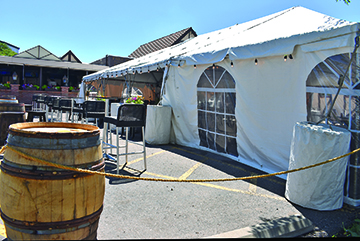
Bull & Bush Expansion: The tent was established during the Covid 19 era with the assistance of the City of Glendale and still stands today for overflow customers.
It is widely acknowledged that one of the joys of urban living is the availability of a wide array of restaurants of all different types and cuisines. But it has been extensively reported that many Denver restaurants are suffering with the number of restaurants dropping a whopping 22% since 2021 according Denver’s Department of Excise and Licenses.
At the same time according to the sales tax records of the city of Glendale, which is completely surrounded by the city of Denver, the restaurants have been experiencing steady growth every year since 2021.

Popular Restaurant Owner: Paul Sullivan, owner of Esters Neighborhood Pub operates two locations in Denver, and one in Wheat Ridge.
Minimum Wage
One of the key reasons for the disparity is the minimum wage differential for tipped employees between the two cities. Denver imposes a minimum of $15.79 per hour compared to $11.79 per hour in Glendale. Moreover, Denver has a very complex set of rules concerning what the minimum wage entails. Denver restaurants have had to pass those added costs to the customers who are price sensitive these days or suffer on the restaurants’ bottom line.
“The tipped minimum wage has ripple effects,” said Paul Sullivan, owner of Esters Neighborhood Pub. “We have cut back significantly on benefits that we offer to our co-workers that we had offered for years, we have reduced the number of people and the number of hours, and we are still making less money because of the tipped minimum wage. This comes directly out of the operator’s bottom line and that crushes us.”
COVID 19
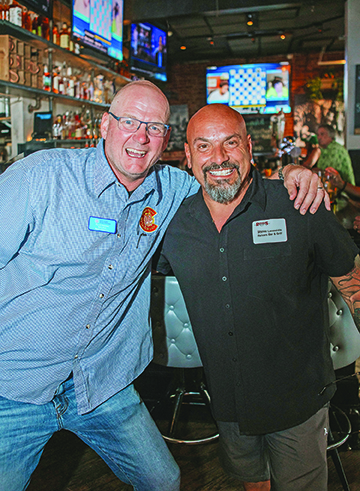
Restaurateurs: Steve Lemonidis, General Manager of Reivers Bar & Grill (right), and Dave Peterson, co-owner of the Bull & Bush Brewery in Glendale, have different experiences when operating in their respective cities.
COVID 19 badly hurt restaurants throughout Colorado starting in 2020 but Denver’s approach was far more harmful than Glendale’s. According to Glendale restaurant owners the city tried to ameliorate the draconian restrictions imposed by the Tri County Health Department (who had jurisdiction over the city) and led the fight to in fact dissolve Tri County Health due to its draconian bureaucratic approach to the crisis.
David Peterson, co-owner of the Bull & Bush Brewery in Glendale, said, “During COVID, we put up a giant 100-person heated tent because, for a time, you could only serve food and drink outdoors. The permitting process in Glendale was extremely simple and took about 10 minutes and the permit was granted immediately for a change of premise liquor license.”
“To this day, we still use the tent as overflow,” said Peterson. “The city came to me and suggested altering the change of premises from temporary to permanent. That way, I didn’t need to reapply every year. They [the city] were proactive in something I should have been proactive in.”
The attitude of Denver was quite the opposite according to Steve Lemonidis the general manager of Reivers Bar & Grill in the Wash Park neighborhood of Denver. The city, he indicated, refused to educate his staff on exactly what the rules were but simply sent in inspectors who constantly handed out citations. For his restaurant the myriads of citations totaled $53,000 and failure to pay immediately would have resulted in revocation of the liquor license and the closure of the business.
“There was no explanation on where the restrictions came from,” said Lemonidis. “Yet, our mayor [Hancock] was on an airplane on Thanksgiving morning telling us all not to be with our families, but yet he was on an airplane to fly to see his family on Thanksgiving Day. It seems like the city was talking out of both sides of their mouth and it hurt us.”
The bureaucratic, almost anti-business, attitude toward restaurants is somewhat surprising given the fact that Denver’s most noted recent mayor (2003-2011) U.S. Senator John Hickenlooper was a restaurateur, as owner of restaurants such as Wynkoop Brewery, Wazee Supper Club, and Cherry Cricket.
But his successor, Michael Hancock, was attentive to the needs of real estate developers and not much else, while the new mayor Mike Johnston concentrates his administration’s efforts on the homeless who do not go to restaurants very often.
As Troy Guard the owner and chef of Guard and Grace told the Colorado Sun, “Honestly, I love Denver … But it’s becoming more and more difficult to open restaurants.”
Red Tape
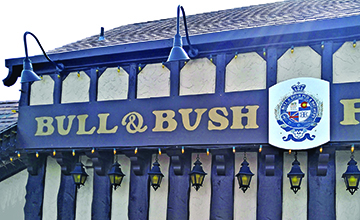
Glendale: Bull & Bush Brewery opened their restaurant in Glendale in 1971. It is the oldest restaurant in Glendale. Photo by Mae Lynn Photography
One of the reasons businessmen do not want to open a restaurant in Denver these days is the enormous amount of red tape involved in building permits, inspection reviews, construction restriction, greenhouse gas rules, etc. Denver estimates the time to go through its process for a new restaurant is eight months, but those who have undergone the process say that a year or more can be anticipated.
In Glendale the process can be completed in weeks. Dave Peterson of the Bull & Bush noted he recently had to install a new roof and had to get the approval from the City of Glendale and Xcel Energy. When he indicated that he thought if he called the city he could get an inspection that afternoon the Xcel Energy official he was working with (who was used to working in Denver) laughed saying it would take weeks if not months to schedule an inspection. Glendale came over that afternoon, and as a result the restaurant had to close only half a day for the roof replacement.
Parking
An ever-growing problem for Denver restaurants in various parts of the city is ever diminishing parking in Denver. The city’s goal is to make parking increasingly difficult to force its citizens, and anyone traveling to Denver, to take public transportation for the purpose of limiting greenhouse gases and other societal goals.
Glendale, on the other hand, has not only not decreased parking but is expanding it. Glendale is presently finishing a seven story 1,200 car garage facility on Virginia Avenue to help its Four Mile Entertainment District which will house various restaurants and bars.
Glendale’s City Manager Chuck Line stated that: “We are taking the exact opposite approach from Denver. I believe restaurants and other businesses in Glendale will prosper because of it.”

Denver: Esters Neighborhood Pub opened their location in Virginia Village over nine years ago (pictured) and their location in Park Hill six years ago. Photo by Mae Lynn Photography
Crime And Homelessness
Restaurants in various parts of Denver such as Downtown suffer from the perception that they are not in a safe area and suffer from the homeless encampments. On the night of January 11, 2025, a 24-year old man stabbed four people on the 16th Street Mall, killing two. Pro forma statements about Downtown safety by Mayor Mike Johnston did little to improve the adverse publicity.
In Glendale there are simply no homeless encampments, Dave Peterson notes that the Glendale police respond to calls in minutes. He knows of no-one who feels unsafe in Glendale.
Look Toward The Future
Paul Sullivan who owns two Esters Neighborhood Pubs in Denver opined, “The cost of doing business recently, in the city of Denver specifically, is not sustainable at the current moment. There are a few different reasons, and it is sort of like death by a thousand cuts. There is a lot of stuff coming at us in the city of Denver.”
The fact that there are still over 2,000 restaurants in Denver is a testament to the resilience of the restaurant community in the city. However, it is difficult to see why the number of restaurants in the city will not continue to drop unless and until Denver’s Mayor Mike Johnston and his Administration decide to reach out to restaurateurs and start to address their many concerns on how the city operates with regard to its restaurant industry.
Glendale, on the other hand, appears to be poised to undergo boom times such as it hasn’t experienced since the 1970s.
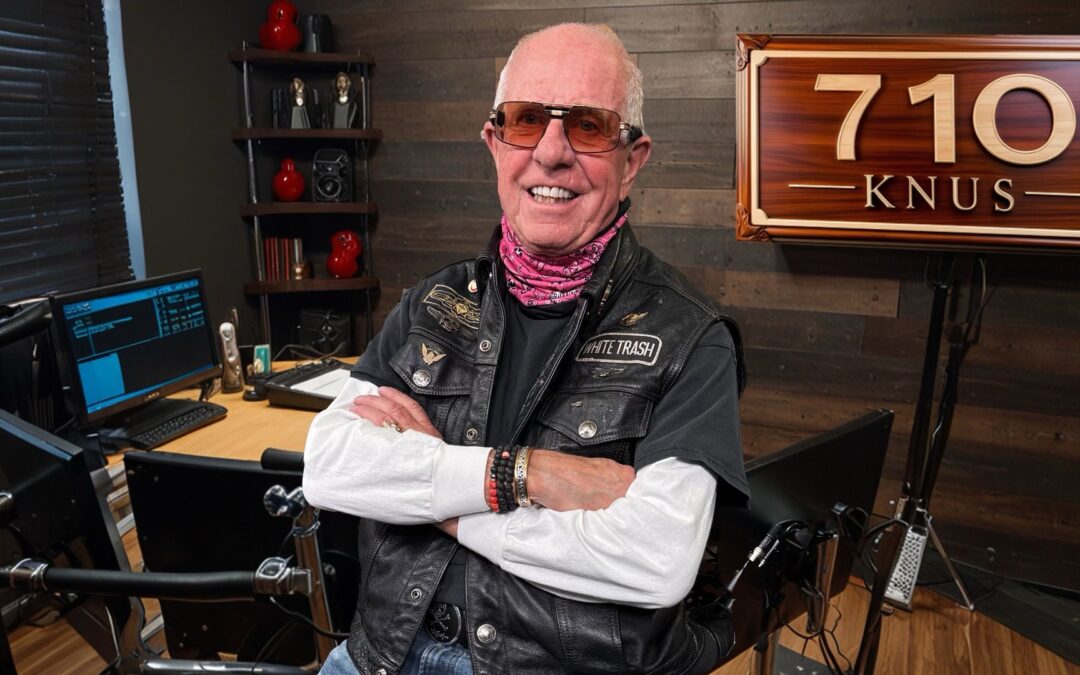
by Peter Boyles | Jan 16, 2025 | Blasting with Boyles
Blasting With Boyles
OPINION

Are we becoming not Jonestown but Johnstown? Most people remember the sadness of Jim Jones in Guyana, force feeding Kool Aid. It was the sad people who moved with him from San Francisco, and later, of course, gunshots rang out. Som eone shoots Jim Jones.
eone shoots Jim Jones.
You can almost hear those same gunshots every
night on the 16th Street Mall. Our city is in decline. And you would have to be a fool not to recognize it.
So, when the well-known substance rolls downhill, it always rolls down on you. Here’s a headline that we never see with Kyle Clark’s Channel 9 News. Denver has been ranked among the worst run cities in the United States by a WalletHub study. Interestingly enough for those of you keeping score at home, San Francisco won the award of being the worst run city in America. Guess who we’re closing in on?
The Mile High City is in the bottom 10 and San Francisco is ranked last.
We’ve always quoted Barry McGuire’s classic song The Eve of Destruction. As Barry tells you, “Look around you boy, it’s bound to scare you, boy.”
The quality of city services has been cut. The Mayor, remember he promised he was going to put an end to homelessness in four years. One of the great laws of economics is if you want more of something subsidize it. Jim Jones “Junior” has cut large chunks out of all department budgets due to the influx of the people he likes to call newcomers. And actually visualized housewives standing in the middle of Broadway like the brave Chinese man in Tiananmen Square to stop illegal immigrants being removed from the city.
Immigration spending by the city was expected to reach $90 million by the end of the year. As it turns out, the city is on track to spend $155 million up to and including December of 2024 — $65 million more than Johnston previously said it would cost.
What does the future look like? US News and World Report said it looks at the data on America’s 150 most populous metro areas that includes cost of living, job markets, crime rates, public education, and much more. The rankings that US News and World Report used were from census, the FBI, and Department of Labor. The best place to live is Green Bay, Wisconsin. Denver ranked high in the survey in a quite different category. Denver is listed as the 15th most dangerous place to live in our country, 16th most expensive place to live. Since 2020 when Denver was number 2 overall in the list of best places to live, we have dropped to 55th.
These are all trends heading in the wrong direction.
The Denver Gazette reported that three years ago Boulder and Denver took the number one and two spots. Boulder is now number four, Colorado Springs is number 9. Fort Collins is number 23. And Denver has tumbled close to the bottom.
So as Lenin asks, what is to be done? The impossible needs to be done. The Democrats and Republicans alike must look at our city and fear what the next five, 10, or 20 years will bring. We all have children and grandchildren, what are we leaving them?
We’re not going to get better with people like this Mayor, and members of the City Council who voted for heroin injection sites.
Honestly folks the future of Denver, Colorado, is bleak. When is the last time you went downtown? Took your kids to see Christmas lights? Or better yet, got yourself a concealed permit. This isn’t funny. The future is not bright, and we have to pull together and keep the lunatics away from elected office.
Mark my words, there will come a time…
— Peter Boyles
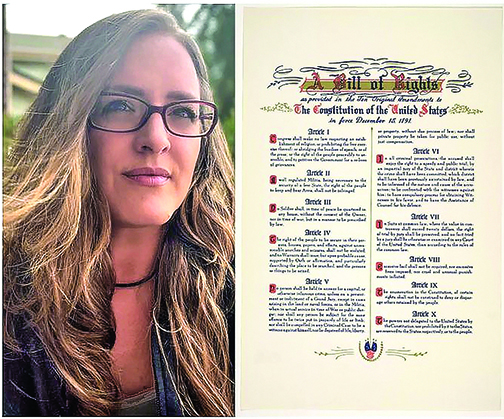
by Ashe in America | Jan 16, 2025 | Feature Story Bottom Left
ASHE IN AMERICA — OPINION
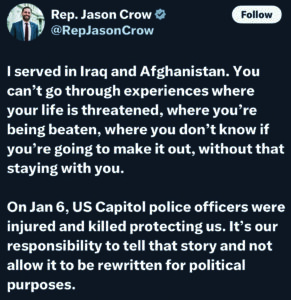 Different factions of Americans are living in different realities.
Different factions of Americans are living in different realities.
Earlier this month, the nation observed the fourth anniversary of January 6, 2021. Few things are more divisive than the competing narratives of January 6.
The Very Official Narrative, which Rep Jason Crow (D-CO06) spent most of the anniversary propagating, was wrapped in a bow since the day it launched.
After months of denying the election results, President Trump called his supporters to Washington, D.C. When he spoke to these supporters, he urged them to march to the Capitol, where Congress was certifying the 2020 Electoral College.
These calls to march “peacefully” and “patriotically” were “coded dog whistles” to encourage violence and overthrow the government. They did march to the building, where they forcibly entered, assaulted police, vandalized, and stopped certification. Oh, and five police officers died.
Those that believe the very official narrative are confused that the insurrection isn’t disqualifying. Why are the American People so willing to forgive insurrection?
This confusion is easily resolved. The majority of people — and, based on the 2024 election results, of voters — simply don’t believe the very official narrative. Why?
The easiest answer is that the very official narrative is often very officially wrong. The media — and their sources, many anonymous and not authorized to speak on the matter — have lost the trust of the people.
Enter the alternative story: January 6 was instigated by those with institutional power to end all inquiries into a dubious election. The alternative story is not wrapped in a bow. It’s messy and raises more questions than it answers.
Donald Trump said on January 6 to remain peaceful and respect law enforcement. He respected the chain of command at the Capitol, for which the top was Speaker Nancy Pelosi. Trump authorized all resource requests before and during the riot. Pelosi delayed requests from Capitol Police per former Chief Steven Sund.
President Trump did NOT deploy the military, which should be a good thing, but was later presented as evidence in a Colorado civil court that Trump enabled the mob through inaction. Imagine the very official narrative if Trump had deployed the military, outside the chain of command, on U.S. soil that day.
No one was armed, a dispositive fact for the “coded dog whistle” assertion. Violent coups don’t happen without arms but, instead of being dispositive, this fact is simply dismissed. The narrators claim that the plan was to use barricades and “sharpened flagpoles,” and to steal weapons from police… to overthrow the U.S. government.
It’s very silly when considered without the emotional blackmail of dead police officers.
Also, there were no dead police officers. That was always a lie, and now they claim that the five police officers that eventually died, four of them from suicide and none of them on January 6, died “as a result of the riot.” They deceptively continue to claim five dead police officers, on January 6, at the hands of insurrectionists.
In fact, Trump-supporting protesters were the only people to die on January 6, unarmed and at the hands of Capitol police.
Remember the pipe bombs? Congress was originally evacuated over the pipe bomb threats, not the riot. It’s more than four years later and the pipe bomber has yet to be identified or apprehended. The very official congressional committee ignored this, too.
Speaking of the committee, Pelosi was communicating with the Secret Service on January 6, but their texts have gone “missing.” Pelosi was “off limits” and “not a subject” of the investigation. Her communications and decision making have never been produced or examined. Also, her daughter was making a documentary that day. Her hand-picked committee buried public surveillance videos, destroyed files, and tampered with at least one witness, Cassidy Hutchinson.
Messy and in dispute, the alternative story raises many questions. The very official narrative does as well, but it discourages inquiry and demands trust. But trust cannot be compelled or coerced.
That’s how we got here, occupying different realities, bolstered by our varying levels of institutional trust and underscored by some of the facts, but probably not them all. As shown in the image above, Crow claims that the trauma of Congress that day is comparable to serving in Iraq and Afghanistan. Check out the comments on his post to see how other veterans responded to that claim.
Public trust matters, and convergence — truth and reconciliation — of competing narratives is required to restore it. J6 is an example, but you can imagine the different realities across many narrative domains: economics, climate change, gender affirmation, education, foreign policy.
Convergence is not impossible, but it won’t be easy — people love their comfortable narratives and resist admitting they got it wrong. And everyone got it, at least, a little wrong.
Nothing worthwhile ever came easy, and restoring public trust is certainly worthwhile. Are we brave enough to face what’s true?
Ashe in America is a writer and activist. Find all her work at linktree.com/asheinamerica.

by Valley Gadfly | Jan 16, 2025 | Valley Gadfly
February is filled with love, reflection, and transition. Songs and music of the season combine the emotional depth of winter with the ever-present hope that spring will soon arrive.
From winter’s chill, to the warmth of Valentine’s Day, February creates an intense emotional landscape. Suddenly we feel all giddy and lightheaded like a “Silly Love Song.”
Here are our heart-to-heart choices for shopping, dining, and entertainment to get you sharing, and caring together. A stormy, swooning February affair to win you a hug and kiss:
Don’t miss the Colorado Symphony tribute to Mel Brooks — including Blazing Saddles film clips plus recent musicals — by John Morris playing at Boettcher Concert Hall on Saturday, Feb. 1, 7:30 p.m. Information: 303-623-7876.
Capture the Mardi Gras spirit, New Orleans’ soul, as Lincoln Center artists play Songbook at Lone Tree Arts Center Feb. 7, 7:30 p.m. Information: 720-509-1000.
Must see: Swallow Hill’s Valentine Concert by Dakota Blonde — the “Front Range Darlings” — in Daniels Hall Feb. 14, 8 p.m. Information: 303-777-1003.
Closed after 38 years, the Monaco Inn Restaurant space has become the second location for Lowry’s Italian eatery Pomodoro Pizza & Pasta. The larger Monaco Square space has the same menu as the Lowry site. Information: 303-320-1104.
Make 2025 Stanley’s Year! With 50+ local firms in Aurora at 2501 Dallas St., Stanley Marketplace is a shopping bonanza featuring shops, eateries, bars, gyms, and salons. It’s a family place with daily free events. Information: 720-990-6743.
Denver Brass does hot horn blowing, plus trumpet solos during the Fat Tuesday Festa at the Newman Center Feb. 15-16, 2:30 p.m. Information: 303-871-7720.
With six albums plus an incredible 16 Billboard Number One hits, jazz artist Adam Hawley entertains at Dazzle Feb. 21, 6:30 p.m. Information: 303- 839-5100.
American singer, rapper, and actress Mary J. Blige — a nine Grammy winner — entertains at the Ball Arena on Feb. 25, 7 p.m. Information: 303-405-1100.
Attend the Delores Project Open House & Lunch Feb. 20, 11:30 a.m.-1:30 p.m. The metro’s largest provider of emergency and extended-stay shelter for homeless women and transgender individuals, it was founded in 1999. Meet staff, tour facility, ask questions during the event at 3450 W. 13th Ave. Information: 303-534-5411.
The third week in February is International Flirting Week. If you believe Paul McCartney’s Silly Love Songs, take them to heart. This is also “An Affair to Remember Month.”
There’s something about love songs that motivates happiness. Possibly the upbeat tempo? Cheerful lyrics, the singer’s voice helps. Impact: Ballads stir emotions, tug at our heartstrings.
Actually, neither true love nor music makes the world go around, but it sure makes life’s high notes seem sweeter. What do you call sweets that can keep a beat? “Candy rappers.”
— Glen Richardson
The Valley Gadfly can be reached at newspaper@glendalecherrycreek.com












